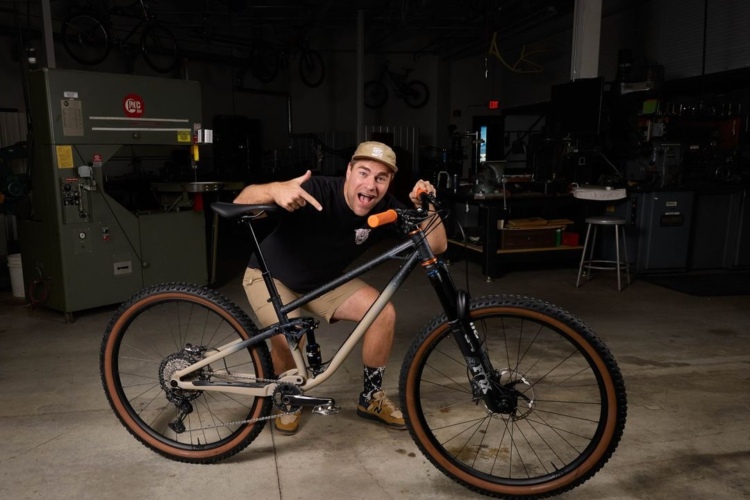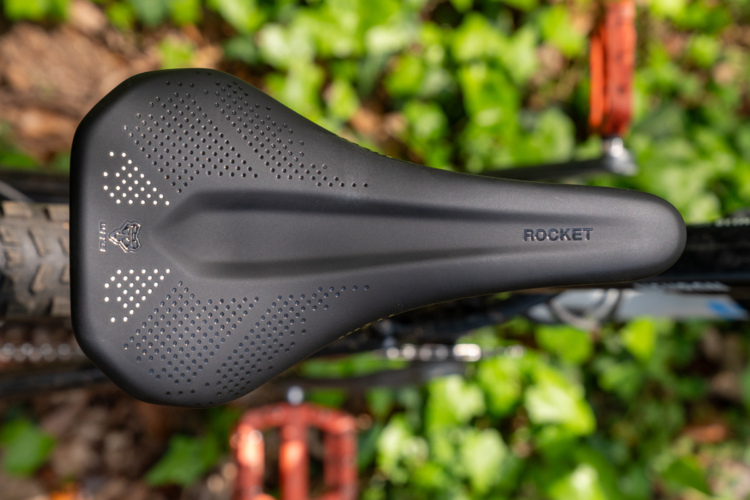
Steel bikes seem to be getting a lot of attention lately. Trek teased a steel version of its Top Fuel on social media recently, and there have been several new steel bike launches in the past two years, including the Southern Gravity Steel DH bike and the Scarab Darien. Have we entered steel’s renaissance era, or is this just another passing fad?
To find out, Singletracks spoke to Jeff Lenosky, professional mountain biker and the Brand Manager for REEB Cycles; Eric Tomczak, the owner of Myth Cycles; Vince Colvin, the Director of Operations and Product Design at Chumba USA; and Fergus Liam, the US Marketing Director for Ritchey.

Riders could be turning to steel because they want something different.
Lenosky believes that, as the bicycle market continues to evolve, carbon has become somewhat ubiquitous and doesn’t necessarily hold the appeal it once did. “I see more riders are being drawn to steel because they like the attributes of it. It’s somewhat unique and there’s more ability to customize it. Whether intentional or not, e-bikes are getting slimmer, carbon bikes are getting fatter, and bikes in general are looking more and more like each other. Steel clearly looks different, and people want to look special when they show up to the trail.”
Tomczak agrees. “People are interested in steel because it’s different. It looks different and it rides different.” It’s also a very great material to work with, according to Tomczak. “I can get exactly what I need for a given application.”
For Colvin, steel bikes “are like a blank canvas people can bring their ideas to. Builders can make them unique to any given situation. Steel is way more open-ended than aluminum or carbon fiber.”
Liam put it this way: “It’s a living material. Born out of fire. Crafted out of materials you dig out of the dirt. It’s recyclable. It has an intangible quality that speaks to [riders].”
So, maybe steel’s increased popularity is a sign that riders are tired of mainstream mountain bikes becoming carbon (or aluminum) copies of each other.

The durability of steel might also be fueling its renewed popularity.
Today’s riders are pushing the limits of what is considered normal to do on a bike. Tomczak thinks that riders are willing to have heavier bikes if they are durable. “That mentally has paved the way for full suspension steel bikes to have their day.”
As Liam explained it, “carbon fiber has an infinite fatigue life, which makes it great for handlebars and seatposts. But, if you damage it, its failure is often catastrophic. Aluminum has a relatively short fatigue life. You can’t repair dents [in an aluminum frame].”
In contrast, Liam noted that “steel has a massive fatigue life and is repairable. If the tubing cracks, you can weld it back together. It’s more synergistic.” If a rider manages to crack a steel frame, it’s not the end of the bike, and welding a steel frame back together is much cheaper than buying a new one.

Today’s carbon and aluminum bikes don’t have a significant weight advantage over their contemporary steel counterparts.
Tomczak, who has been building steel bikes for over a decade, has lost track of how many people have complained about their weight. “Bike culture has accepted the false idea that steel is heavy. I won’t fight that battle anymore. Steel will always have that reputation with people who don’t know enough about it.”
Not only are today’s steel bikes lighter than ever before, but their aluminum and carbon fiber counterparts are getting heavier, according to Tomczak. “I noticed a shift four or five years ago where companies began making bikes heavier.” Tomczak theorized the shift might have been caused by riders getting tired of broken frames and being more willing to accept heavier bikes that were more durable.
Additionally, builders are using technological advancements to help narrow the difference in weight among carbon fiber, aluminum, and steel bikes even more. Thanks to additive manufacturing (3D printing), REEB was able to make the main pivot location and rear triangle of the SST at a substantial weight savings over forging or casting them. Lenosky credits additive manufacturing as one of the main reasons why REEB was able to bring its full suspension steel bikes to the market.
Colvin said that Chumba makes lighter steel frames by using its build process for titanium bikes. It places heat sinks inside the frame and pumps argon into it to purge out the oxygen before welding. “Our bikes have practically no distortion inside the tubes. It helps with the purity of the weld and the integrity of the joints.” That means that Chumba can use lighter weight steel to make a frame that is very strong.
So, riders who are focused on bike weight don’t have to cross steel off their list. In fact, the disappearing weight advantage of carbon and aluminum bikes over steel means riders should now consider steel as a viable alternative.

Still, it’s not clear if the renewed interest in steel bikes will last.
Trek’s teasing of a steel-frame Top Fuel bike has certainly fueled a renewed interest in the material. Lenosky said that it has had a positive impact on REEB. “It’s awesome to see big brands noticing what we are doing. It’s validation for us.”
Could this be the start of a market shift toward steel? Maybe. “I think it shows that customers will continue to look for something special and something different,” said Lenoksy. However, as Lenosky points out, “it’s harder to scale steel. One mold can produce hundreds or even thousands of carbon frames, but to build steel, you need more equipment and labor.”
Additionally, while Colvin said he wouldn’t be surprised if one of the major bike manufacturers dipped their toes into making steel bikes, he personally doesn’t see the allure of a mass-produced steel frame bike. “Most of the riders who gravitate toward steel want something unique.” In his mind, riders who choose steel “are looking for upgraded unique products. Something that matches what they want to achieve.”
So, just like the material itself, steel is always going to be a part of mountain biking in some way, shape, or form. Only time will tell if it continues to lurk in the shadows or takes center stage.





















18 Comments
Dec 13, 2024
Dec 13, 2024
As a sidenote, I recently acquired an ‘86 (steel, of course) Stumpjumper from it’s original owner. I am refurbishing it, leaving in its original build
configuration. The project is my tribute to our mtb ‘founding fathers’ (Ritchey, Fisher, and Kelly), and Specialized’s founder (Sinyard) for creating the first mass produced mountain bike - “A bike for all reasons”.
Dec 12, 2024
Dec 13, 2024
Dec 12, 2024
Not sure I agree people are interested because its different, and looking different and riding different are not necessarily good things.
[Liam put it this way: “It’s a living material. Born out of fire. Crafted out of materials you dig out of the dirt. It’s recyclable. It has an intangible quality that speaks to [riders].”]
That perfectly describes Aluminum….
Its all about price, performance, and ……. Perpetuity? …….. Permanence? What’s a good P word for durability so I can say its all about the 3 P’s?
People want the best performance and durability they can get for the price and everybody's price point is different.
Dec 13, 2024
Dec 12, 2024
Dec 12, 2024
Dec 12, 2024
Dec 15, 2024
Dec 12, 2024
Dec 12, 2024
Dec 12, 2024
Dec 14, 2024
I would entertain a steel full suspension bike, but I haven't found one with the geometry I would like yet.
Dec 15, 2024
Dec 21, 2024
Dec 13, 2024
Dec 13, 2024